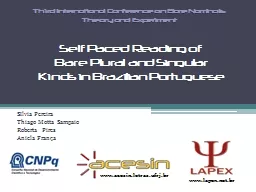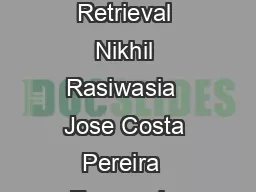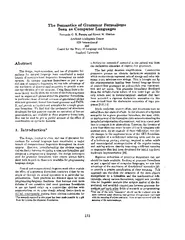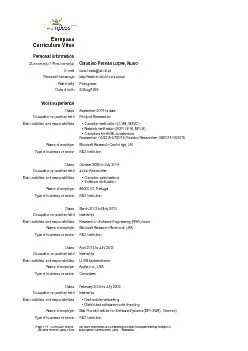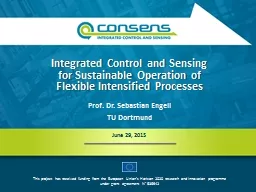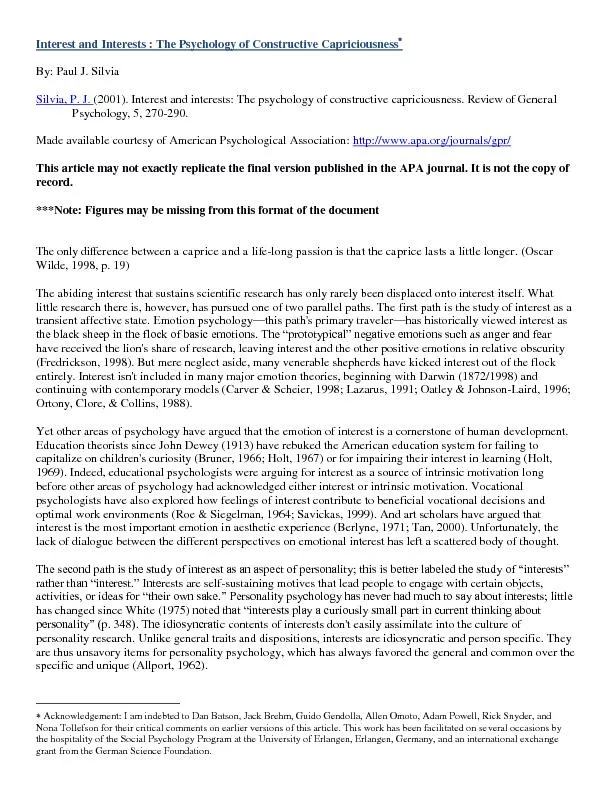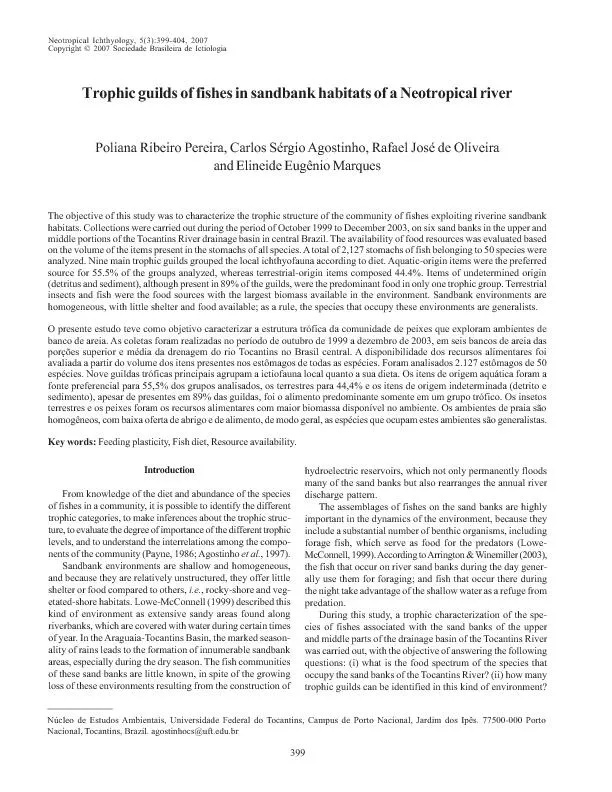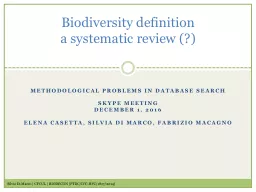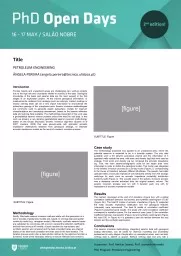PPT-Sílvia Pereira
Author : test | Published Date : 2016-07-13
Thiago Motta Sampaio Roberta Pires Aniela França Third International Conference on Bare Nominals Theory and Experiment wwwacesinletrasufrjbr wwwlapexnetbr
Presentation Embed Code
Download Presentation
Download Presentation The PPT/PDF document "Sílvia Pereira" is the property of its rightful owner. Permission is granted to download and print the materials on this website for personal, non-commercial use only, and to display it on your personal computer provided you do not modify the materials and that you retain all copyright notices contained in the materials. By downloading content from our website, you accept the terms of this agreement.
Sílvia Pereira: Transcript
Download Rules Of Document
"Sílvia Pereira"The content belongs to its owner. You may download and print it for personal use, without modification, and keep all copyright notices. By downloading, you agree to these terms.
Related Documents

